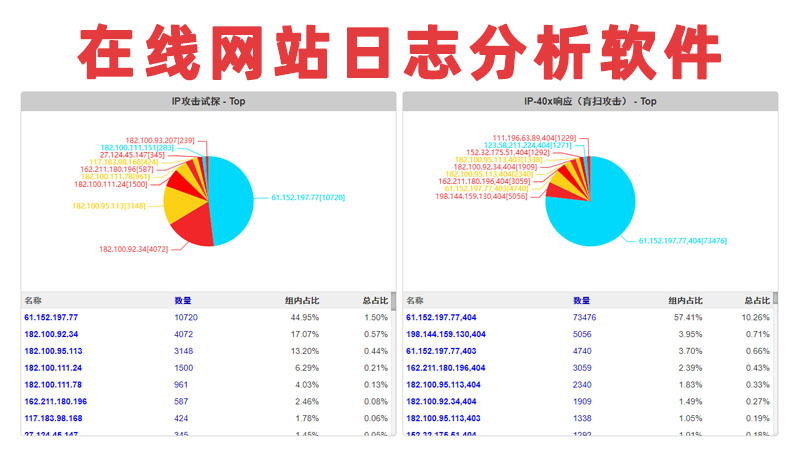正则表达式基本介绍
正则表达式使用单个字符串来描述、匹配一系列符合某个句法规则的字符串。在很多文本编辑里,正则表达式通常被用来检索、替换那些符合某个模式的文本。
正则表达式的基本元素包括普通字符和元字符,例如,a、b、1、2 等字符属于普通字符,普通字符可以按照字面意思理解,如:a 只能理解为英文的小写字母a,没有其他隐藏含义。而*、^、[]等元字符,Shell赋予了它们超越字面意思的意义,如:*符号的字面意义只是一个符号,而实际上却表示了重复前面的字符0 次或多次的隐藏含义。因此,掌握正则表达式基本元素主要是对正则表达式中元字符意义的掌握。POSIX 标准将正则表达式分为两类:基本的正则表达式和扩展的正则表达式。
2.grep 概念
grep的全称是globalsearch regular expression(RE)andprint out the line,翻译过来就是全面搜索正则表达式并把行打印出来。其实grep并不是一个单独的程序,而是一个家族。包括grep、egrep和fgrep。egrep和fgrep在使用上与grep并没有显著的不同。egrep是grep的扩展,扩展的正则表达式。
3.grep的使用格式
grep [OPTIONS] PATTERN [FILE...]
常用的[OPTIONS]有以下几个:
-i:匹配时忽略大小写
–color:将匹配的字符串加以颜色显示
-v:显示未被模式匹配到的行
-o:只显示被模式匹配到的字符串
-A#: 表示在匹配的行后将其下面的#行也显示出来
-B#: 表示在匹配的行后将其前面的#行也显示出来
-C#: 表示在匹配的行后将其前后的#行也显示出来
-E:使用扩展正则表达式
基本正则表达式:
以下实例中使用的文本regular_express.txt内容是鸟哥网站上复制过来的。其内容如下。
“Open Source” is a good mechanismto develop programs.
apple is my favorite food.
Football game is not use feet only.
this dress doesn’t fit me.
However, this dress is about $ 3183 dollars.
GNU is free air not free beer.
Her hair is very beauty.
I can’t finish the test.
Oh! The soup taste good.
motorcycle is cheap than car.
This window is clear.
the symbol ‘*’ is represented as start.
Oh! Mygod!
The gd software is a library for draftingprograms.
You are the best is mean you are the no. 1.
The world <Happy> is the same with”glad”.
I like dog.
google is the best tools for search keyword.
goooooogle yes!
go! go! Let’s go.
# I am VBird
使用的grep和egrep命令显示的颜色是在用户的~/.bashrc目录下定义的别名
alias grep=’grep –color’
alias egrep=’egrep –color’
元字符:
.:匹配任意单个字符
例如:
[root@localhostdata]# grep ‘g..g’ regular_express.txt
google is the best tools for search keyword.
*:表示匹配其前面的字符任意次
例如:
[root@localhostdata]# grep ‘goo*g’ regular_express.txt
google is the best tools for search keyword.
goooooogle yes!
.*:任意长度的任意字符
例如:
[root@localhostdata]# grep ‘goo.*g’ regular_express.txt
“OpenSource” is a good mechanism to develop programs.
google is thebest tools for search keyword.
goooooogle yes!
\?:匹配其前面的字符1次或0次
例如:
[root@localhostdata]# grep ‘gooo\?g’ regular_express.txt
google is thebest tools for search keyword.
\+:其前面的字符至少出现一次
例如:
[root@localhostdata]# grep ‘goo\+’ regular_express.txt
“OpenSource” is a good mechanism to develop programs.
Oh!The soup taste good.
google is thebest tools for search keyword.
goooooogle yes!
\{m\}:精确匹配其前面的字符为m次
例如:
[root@localhostdata]# grep ‘goo\{2\}’ regular_express.txt
goooooogleyes!
\{m,n\}:匹配其前面的字符至少m次,至多n次
例如:
[root@localhostdata]# grep ‘goo\{2,5\}’ regular_express.txt
goooooogle yes!
[]:指定匹配范围内的任意单个字符
例如:
[root@localhostdata]# grep ‘[HEF]‘ regular_express.txt
Footballgame is not use feet only.
However,this dress is about $ 3183 dollars.
Her hair isvery beauty.
Theworld <Happy>is the same with “glad”.
[^]:指定匹配范围外的任意单个字符
例如:
[root@localhostdata]# tail -2 regular_express.txt|grep ‘[^A-Za-z]‘
# I amVBird
以下是一些常用的特殊字符,就不一一举例了
[[:space:]]:其中[:space:]表示空白字符这个范围,再加上一个[]表示匹配空白字符
[[:punct:]]:标点符号
[[:lower:]]:小写字母
[[:upper:]]:大写字母
[[:alpha:]]:大小写字母
[[:digit:]]:数字
[[:alnum:]]:数字和大小写字母
针对位置锚定:
^:锚定行首,表示^后面的任意内容必须出现在行首
例如:
[root@localhostdata]# grep ‘^go’ regular_express.txt
google isthe best tools for search keyword.
goooooogleyes!
go! go!Let’s go.
$:锚定行尾,表示$前面的任意内容必须出现在行尾
^$:表示空白行
例如:
[root@localhostdata]# grep ‘^$’ regular_express.txt |wc -l
\<或\b:锚定词首,其后面的任意字符必须作为单词首部出现
\>或\b:锚定词尾,其前面的任意字符必须作为单词尾部出现
例如:
[root@localhostdata]# grep ‘^\<root\>’ /etc/passwd
root:x:0:0:root:/root:/bin/bash
[root@localhostdata]# grep ‘^\broot\b’ /etc/passwd
root:x:0:0:root:/root:/bin/bash
分组:
\(\):例如\(ab\)*表示匹配ab可以出现任意次,代表匹配ab这个组合,主要后向引用)
例如:
[root@localhostdata]# grep “\(ab\)\{2,3\}” ./fith.txt
abababx
ababababxy
xyababaxbababy
后向引用:模式中,如果使用\(\)实现了分组,在某行文本的检查中,如果\(\)的模式匹配到某内容,此内容后面的模式可以被引用
\1:表示第1个小括号中出现的内容
\2:表示第2个小括号中出现的内容
….
例如:
[root@localhostdata]# cat test
helove his lover
shelike her lover
helike is liker
shelove her liker
helike him
[root@localhostdata]# grep ‘\(l..e\).*\1′ test
helove his lover
helike is liker
此处小括号是(l..e),\1就表示前面小括号出现的是love,\1就代表是love,小括号
中是like,\1就代表是like
扩展正则表达式:
扩展正则表达式,大部分元字符等与基本的正则表达式都相同,一些特殊的如下:
?:不需要使用\,匹配其前面的字符1次或0次
例如:
[root@localhostdata]# egrep ‘goooo?’ regular_express.txt
goooooogle yes!
+:其前字符至少一次,相当于基本正则表达式的\{1,\}
例如:
[root@localhostdata]# egrep ‘goo+’ regular_express.txt
“OpenSource” is a good mechanism to develop programs.
Oh!The soup taste good.
google is thebest tools for search keyword.
goooooogle yes!
{m,n}:不需要使用\,匹配其前面的字符至少m次,至多n次
例如:
[root@localhostdata]# egrep ‘go{4,6}’ regular_express.txt
goooooogle yes!
():分组
例如:
[root@localhostdata]# egrep ‘(oo){3,5}’ regular_express.txt
goooooogle yes!
|:或者 如a|b,a或者b,是整个左侧或右侧
ab|cd:代表ab或cd
a(b|c)d
fgrep:不支持正则表达式:
后面跟的任意模式都帮他当作字符去匹配,其速度较快,如果不需要正则表达式搜索,则可以使用它
例如:
[root@localhostdata]# fgrep –color ‘gooo’ regular_express.txt
goooooogleyes!
以上简单的列出了正则表达式的一些使用方法,要熟练掌握,还需要多加练习
出处http://sepizi.blog.51cto.com/9773154/1596631
SUM服务器监控软件可监控windows,Linux,Unix,aix等系统









